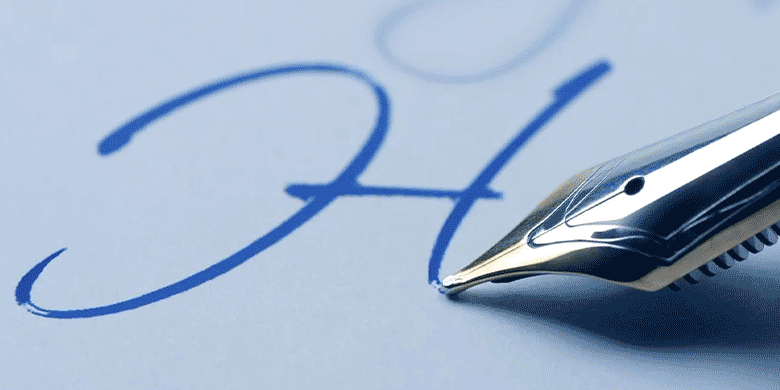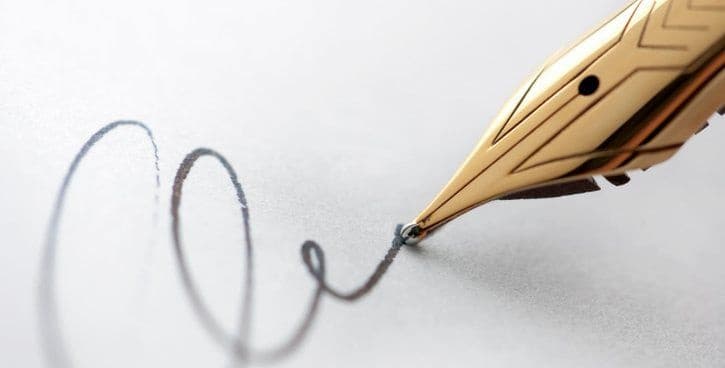
14 February, 2024
The Return of the Fountain Pen
In an age dominated by digital technology and quick-fix solutions, the resurgence of the fountain pen might seem like an anachronistic trend. Yet, many are finding a renewed interest in these classic writing instruments, ditching the promotional ballpoint pen for the refined nib of a fountain pen. It is enjoying a renaissance, even as we speed further into the digital age.
A Sense Of Nostalgia
The emotional resonance of using one is multi-layered. When you hold a fountain pen, you're holding a piece of history. For generations, these pens were a rite of passage, given at graduations and retirements, embodying a sense of tradition and nostalgia. The simple act of taking the cap off, gripping the barrel, and letting the nib glide across the paper brings forth a flood of memories or romanticised visions of the past. Some even associate it with the handwritten letters of their grandparents or scenes from classic films where significant letters are written with one. For many, this is more than just writing; it's a ritual that instils a sense of calm, pulling them away from the relentless pace of the digital age. It's an immediate yet lasting sensory experience that evokes a simpler, perhaps more genuine, time.
The Craftsmanship and Artistry

When one thinks about the craftsmanship of them, the phrase "they don't make them like they used to" often comes to mind. But in this case, that's not accurate because many companies continue to produce pens that are marvels of engineering and design. Take Montblanc, for example. Each nib is hand-crafted and tested by artisans who understand the intricate dynamics of ink flow, air pressure, and material composition. Pelikan's piston-filling system, another example, transformed the industry by allowing for a greater reservoir of ink. But beyond functionality, there's a level of aesthetic artistry involved. Materials like resin, celluloid, precious metals, and even gemstones can be used in the construction, making each pen a unique work of art. Collectors and aficionados often appreciate the heritage and story behind each model, as much as they do the pen's functionality.
The Personalised Writing Experience
To say it offers a personalised writing experience is to acknowledge that each pen becomes an extension of the writer's hand and style. Thanks to the wide array of customisable features, no two people will have the same experience with a fountain pen. Usually made of steel or gold, the nib comes in various styles and sizes—fine, medium, broad, italic—to suit different handwriting styles. Some nibs offer flex, allowing for varied line widths and expressive writing. Then there's the ink. While ballpoints and rollerballs limit you to a fixed colour until the refill is depleted, these offer an almost infinite variety of inks. The colour, saturation, and even shading can be altered depending on the writer's preference. Some inks even offer unique characteristics like water resistance or quick-drying capabilities. Furthermore, the weight and balance of the pen itself can be a factor. Some prefer lightweight pens for quick note-taking, while others might opt for a heavier, more substantial pen for long writing sessions. Over time, a sort of relationship develops between the writer and the pen, each adapting to the other's quirks and characteristics.
Environmental Considerations
In today's environmentally conscious society, sustainability is not just a buzzword; it's a necessary criterion by which we measure our consumption habits. These are inherently reusable and often durable enough to last a lifetime, fit well within this ethos. Many brands like Lamy and Pilot have made concerted efforts to produce pens from sustainable materials, further minimising their environmental footprint. The use of bottled ink eliminates the need for disposable cartridges, which not only offers a superior writing experience but also significantly reduces plastic waste. This makes a substantial difference when compared to disposable ballpoint or gel pens, which contribute to the ever-growing piles of plastic waste filling our landfills. Thus, opting for a fountain pen is not just a personal choice but a responsible one.
The Joy of Writing

Beyond the practicality and aesthetics, an indefinable joy comes with using one. For many, it transforms the mundane task of writing into a delightful experience. There's a therapeutic quality to the tactile sensation of a nib gliding over paper, the subtle resistance providing a kind of tactile feedback that ballpoint or rollerball pens simply can't replicate. The gentle scratching sound, the fluid movement of the hand, and the vibrant trail of ink that it leaves in its wake—these sensorial elements combine to create an almost meditative state for the writer. Many find this soothing and invigorating, rekindling the joy of writing in an age of soulless digital input.
The Rise of Pen Enthusiast Communities
The digital age, paradoxically, has also been a boon for the fountain pen community. Various platforms and social media groups have sprung up to provide invaluable advice, reviews, and first-hand experiences. Websites, blogs, and YouTube channels dedicated to reviewing and discussing every aspect of fountain pen ownership—from the ideal nib size for beginners to the viscosity of various inks—are now just a click away. These inclusive online spaces offer a sense of camaraderie and shared passion that turns a solitary hobby into a vibrant community. It's a place where novices can seek guidance and aficionados can showcase their collections. This has created an ecosystem that sustains and amplifies interest in them, providing a robust support system that ensures this isn't merely a fad but a lasting renaissance.
Conclusion
It is not merely an outdated relic but a timeless instrument that continues to find relevance today. From the allure of craftsmanship to the joy of a personalised writing experience, the reasons for its resurgence are manifold. As we continue to grapple with the environmental, personal, and emotional aspects of modern life, it seems the fountain pen will continue to write its own enduring story.
The Printed Pens Team

